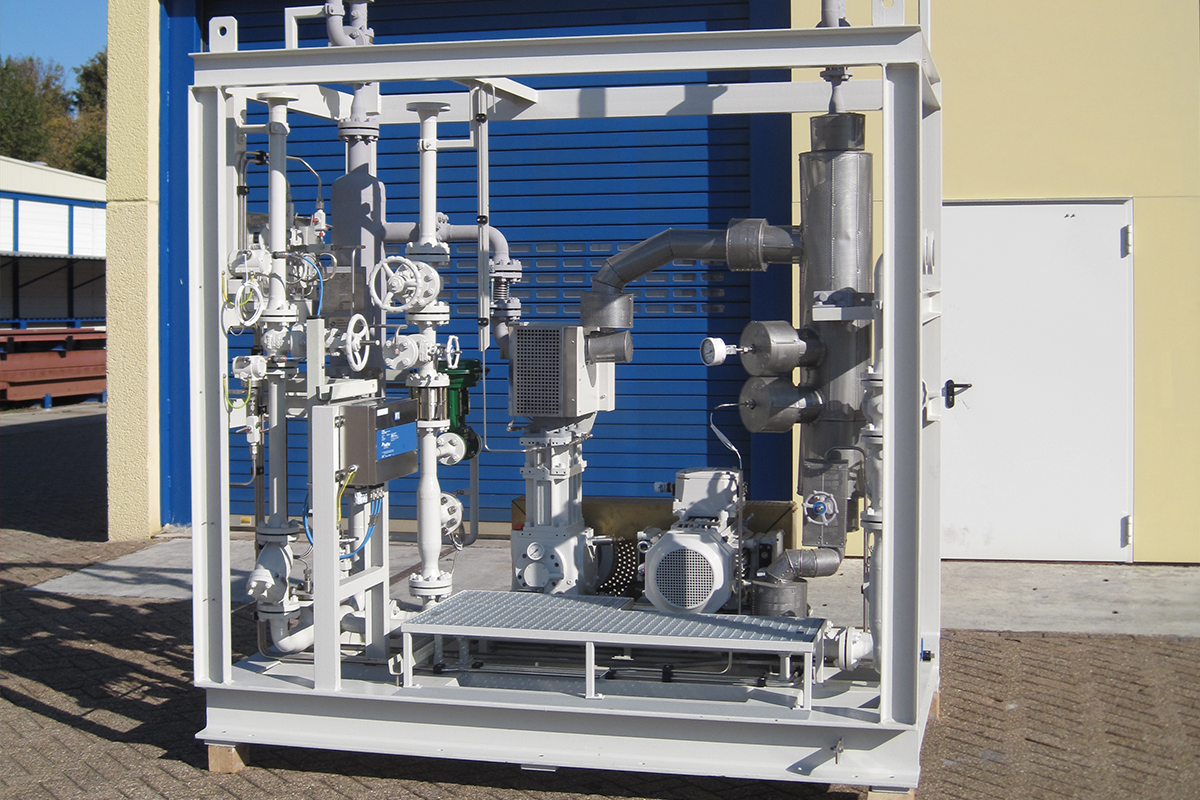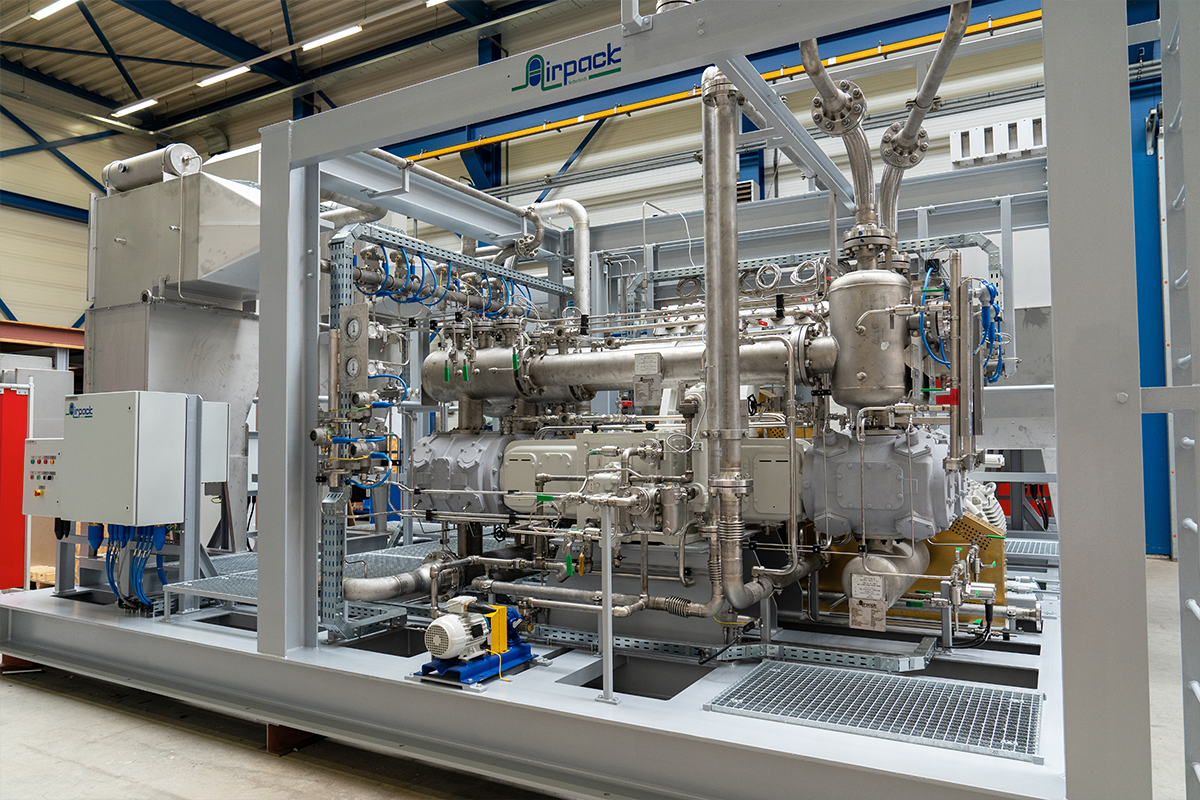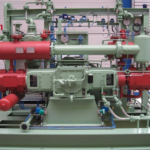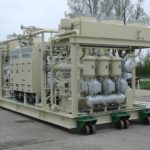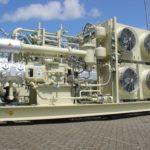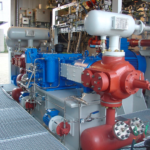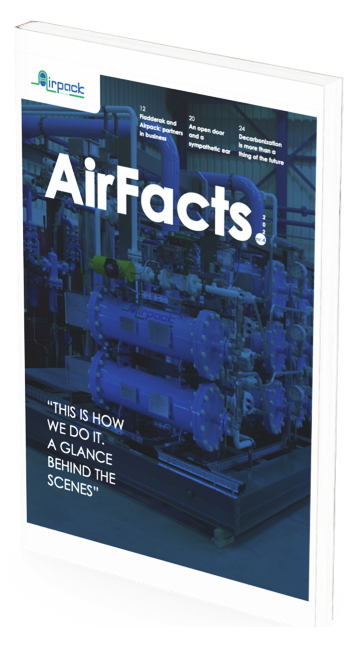RECIPROCATING COMPRESSORS
We offer a complete range of oil-lubricated and oil-free air and gas compressors suitable for any application and environment. All our products can be customized to your specifications and requirements. We are free to choose any compressor brand upon your request or best suitability for the application.
Airpack reciprocating type compressor packages are capable of continuous duty with low levels of maintenance and are suitable for high temperature environments. Our reciprocating compressors can be delivered in different setups: horizontal, vertical or V-type. Depending on the application and available space we can help you decide which type would be best suitable for your request. Reciprocating compressors are available in a wide range of capacities and can go up to very high pressures. The range of each compressor type can be found here. Do you need to go higher in capacity or pressure? Check out our centrifugal compressor or contact our sales team, they are ready to help you find your solution!
Features:
- Easy and low maintenance level
- Low noise frequency
- Suitable for high temperature environments and high pressures
- Suitable for earthquake areas
- Available in oil-lubricated and oil-free
- All compressor brands are possible
In highly developed countries. ready and abundant supplies of energy — for heat, electricity and fuel — are essential to the conduct of commerce and quality of life. This is why expansive infrastructure networks spread across the United States and other economically advanced nation-states. These chains consist of extraction sites, pipelines, refineries, processing facilities and storage repositories. Conveying natural gas and biogas, for instance, through these systems at a reasonable tempo and in sufficient quantity requires reducing the volume under normal atmospheric conditions. Key to this task is the employment of a gas compressor at various points in the supply chain.
What Is a Compressor?
A compressor is an instrument that condenses natural gas so that its volume is constricted to a fraction of what it was pre-compression, i.e. under standard atmospheric pressure. It crunches the gas molecules so they occupy less space. At the same time, the number of molecules remains constant. Just as suitcase contents can be re-arranged to fit more in by eliminating space between articles, gas compression puts molecules closer together so more gas can fit in pipelines and storage tanks. This procedure applies the Ideal Gas Law — pressure x volume = number of moles x universal gas constant x temperature. In short, increasing pressure reduces volume.
What Are Compressors Used For?
Compressors have a wide variety of applications. Among their many functions:
- They compress air for pneumatically powered hand tools like staple guns, nail guns, sanders, riveters, jack hammers and drills.
- They compress gases like hydrogen and oxygen for chemical processing.
- They compress light hydrocarbon fractions in oil refineries.
- They compress natural gas for transport and storage.
It is this last use that bears special attention. This is where heavy duty compression is called for and one specific kind is commonly employed.
Compressors Based on Reciprocity
Among the classes of compressors are those known as intermittent flow. Also known as positive displacement compressors, they process gas in units as opposed to one continuous flow. This category consists of the rotary and reciprocating compressors. Perhaps the major difference between the two is that the former use rotors whereas the latter use pistons. They are similar in that they do their work in the manner of a lung — gas in, compressed gas out; rinse and repeat. The piston variety, or reciprocating compressor, is a critical component of most natural gas operations.
How Does a Reciprocating Piston Compressor Work?
Essentially, most types of reciprocating compressor consist of compression cylinders — sometimes called stages — that detain the gas during the process. In addition, the piston is there to do the actual task of compression. It should be noted that gas is compressed on one side of the piston unless it is part of a double acting reciprocating compressor, in which case the piston works on both sides of its stroke. Variations on this design might include two pistons. Reciprocating compressor manufacturers can vary the design in other ways, too.
For example, it is understandable that any machine with pistons moving back and forth for long periods will require lubrication. Many models incorporate a force-feed lubrication system with oil as the lubricant. However, some jobs are sensitive to oil splash or dispersion so there are also oil free reciprocating air compressors. Here the inner surfaces of the cylinders are pre-coated with alternative lubricating agents. One advantage with oil free is that there is no adding or changing to be remembered or performed. On the other hand, oil-lubed machines tend to have greater longevity so selecting one over the other always involves a trade-off
Other Modifications
Compression can be applied to any number of gases for myriad jobs and tasks. Cylinders are manufactured in different sizes and capacities. Beyond these variations, the number of cylinders is not fixed in either reciprocating air compressors or reciprocating gas compressors. Between the valve where air or gas is received, and the nozzle through which it is expelled, are the cylinders where compression takes place. In a single stage reciprocating air compressor, the air is compressed by a single stroke of the piston exerting pressure of 120 pounds per square inch (psi), and then flows to the storage tank. By contrast, a two stage reciprocating air compressor encompasses a second cylinder where the air is further compressed to 175 psi before storage.
Multistage reciprocating compressors provide more capacity and efficiency. They can power more tools and require no more maintenance than single- or dual-stage compressors. They subject the gas to additional cycles of compression, heating and cooling. Other compressor alterations conern the matter of alignment. A vertical air compressor consumes less floor space than a horizontal air compressor. At the same time, the horizontal compressor might fit better than the v air compressor in the work space. If the compressor is horizontally aligned — or the compressor vertical — both function exactly alike.
In Summary
Gas and air compression machines that operate with reciprocating pistons are relied upon for large tasks that require more power. They come in variable designs and arrangements, each contingent on work environment and how much power is needed for a given undertaking. When more pressure is necessary, they do the job.
- Vertical piston compressor
- Horizontal. piston compressor
- V-type piston compressor
Why choose an Airpack reciprocating compressor package? This is why:
Reliable delivery of compressed air and gas
At Airpack we strive to deliver quality products that will last for more than 25 years and require only standard maintenance. We do not just deliver the product but ensure it is commissioned and in working condition when we leave the site. We guarantee spare parts supply during the lifetime of the package and offer worldwide aftersales service in case of required maintenance or troubleshooting.
High quality products
Delivering high quality products is in our DNA! We know how important it is for our customers to have equipment that has a long lifetime and high performance. Airpack therefore only uses suppliers that deliver high quality materials and equipment. The packages are assembled and thoroughly tested in our workshop to make sure it is ready for operation on arrival.
Customized design
No application or environment or customer is the same. This is why we deliver products that are made according to your specifications and requirements. Do you have space restrictions, severe ambient conditions, is it difficult to do maintenance or do you have any other concern, we are ready to help you find a solution! Contact our sales team to discuss the options.
One responsible supplier
We can supply a full range of products, for example producing plant air, instrument air and high pressure nitrogen. The products can be placed on one common skid where all interconnecting piping, wiring and control systems are installed by Airpack. We take full responsibility and warranty for all items installed on the package. As a customer you only need to deal with one supplier during the entire lifetime of the package (including engineering and built up in project phase).
The following is only a short list of all available options that can be included on our reciprocating compressors:
- Compressor design according to API 618
- LV, MV or HV electric motor with 50 or 60 Hz
- Diesel engine with hydraulic, pneumatic, electric or mechanical starter (different options can be combined)
- Generator can be included connected to diesel engine to make package self-sufficient
- Steam turbine drive
- Variable frequency drive
- Air coolers designed according to API661
- Closed cooled water system with water chiller
- Seawater cooling
- Complete control system with redundant and/or SIL certified PLC
- Control panel with HMI for operation via keypad or touch screen
- Stainless steel components such as oil system, process piping, control panels, coolers, instruments and separators
- ATEX explosion proof equipment, suitable for operation in Zone 1 or Zone 2 environment
- Multiple stage pulse jet inlet filters with sand trap
- Intake filters suitable for corrosive environments
- Winterization enclosure, for extreme low ambient temperatures (down to -56ºC)
- Tropicalization for extreme high ambient temperatures up to 60ºC
- Vibration monitoring system by 4-20 mA detectors or sophisticated Bently
Is your request not listed? Please contact us to discuss the possibilities!


